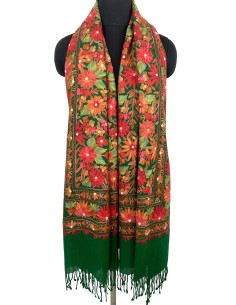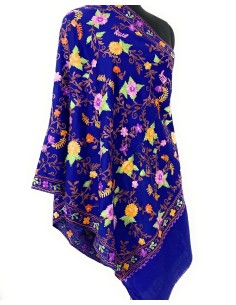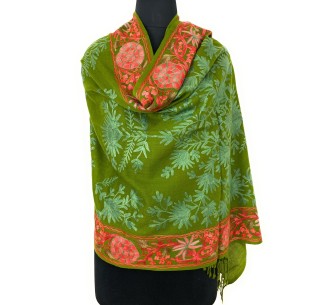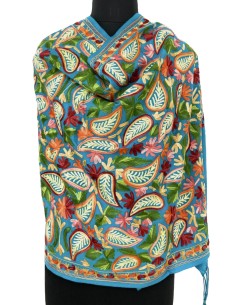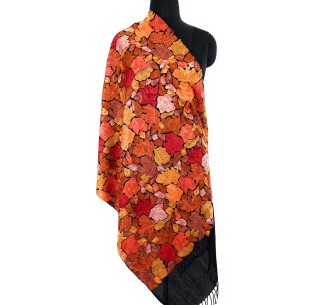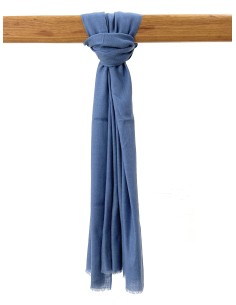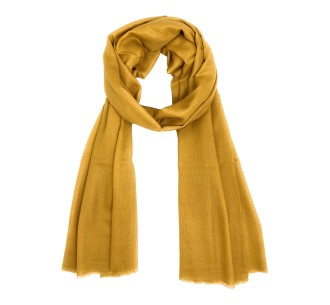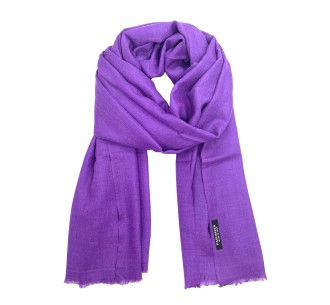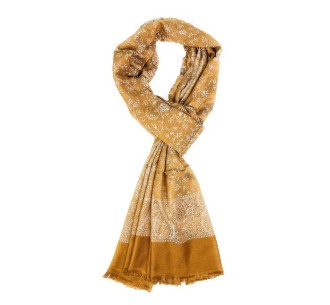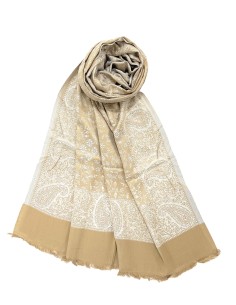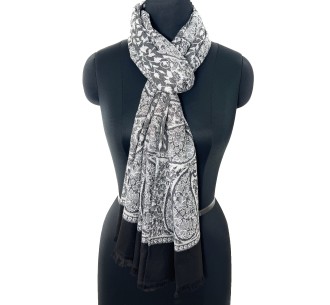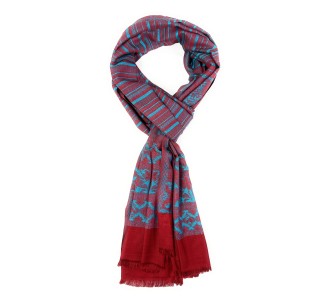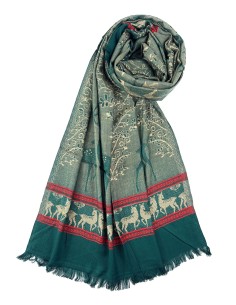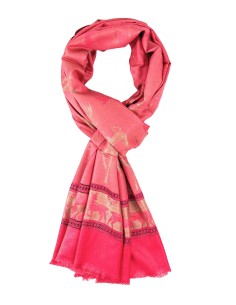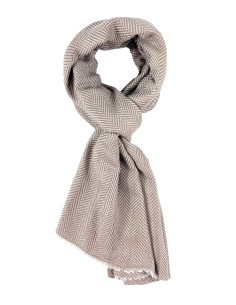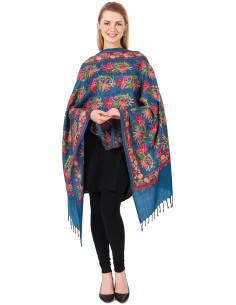- Pashmeen
- Style Guide
- 0 likes
- 318 views
Shop Collection
Grey Merino Wool Pashmina Scarf - Exquisite Aari Embroidery
Looking for the perfect accessory to complete your outfit? Our ultimate guide to differentiating between shawls and pashminas has got you covered! Learn about the differences between these two stylish accessories, how to care for them, and more. Whether you're dressing up for a formal event or adding a touch of elegance to your everyday look, we'll help you choose the perfect accessory.

Are you struggling to differentiate between shawls and pashminas? Do you find yourself perplexed while shopping for one? If yes, then you have come to the right place. In this ultimate guide, we will walk you through everything you need to know about shawls and pashminas, how to differentiate between them, and what factors to consider when buying one.
Introduction
Shawls and pashminas are popular fashion accessories worn by women worldwide. They are elegant, stylish, and versatile. Shawls and pashminas are made from different materials, which is why they have different textures, weights, and warmth. Many people use the terms shawls and pashminas interchangeably, which can lead to confusion. However, there are some significant differences between the two.
In this guide, we will discuss the following:
- What is a shawl?
- What is a pashmina?
- The difference between shawls and pashminas
- Factors to consider when buying a shawl or pashmina
- How to wear a shawl or pashmina
- Care and maintenance of shawls and pashminas
- FAQs about shawls and pashminas
What is a shawl?
A shawl is a large piece of fabric that is draped over the shoulders or wrapped around the body. It is usually made from wool, silk, or cotton and can be plain or patterned. Shawls are lightweight and are perfect for layering. They come in different shapes and sizes, such as rectangular, square, and triangular.
What is a pashmina?
A pashmina is a type of shawl made from the wool of the Himalayan mountain goat. It is also known as cashmere, which is the fine undercoat of the goat. Pashminas are incredibly soft, warm, and lightweight. They are also more expensive than regular shawls.
The difference between shawls and pashminas
Shawls and pashminas are different in many ways, such as:
- Material: Shawls are made from different materials, such as wool, silk, or cotton, while pashminas are made from the wool of the Himalayan mountain goat.
- Texture: Shawls are lightweight and have a smooth texture, while pashminas are incredibly soft, warm, and have a slightly rough texture.
- Cost: Shawls are generally less expensive than pashminas because they are made from different materials.
- Availability: Shawls are more widely available than pashminas, which are a luxury item and are not as common.
- Quality: Pashminas are of higher quality than shawls because they are made from the fine undercoat of the Himalayan mountain goat.
Factors to consider when buying a shawl or pashmina
When buying a shawl or pashmina, there are several factors to consider, such as:
- Material: The material of the shawl or pashmina will determine its texture, weight, and warmth.
- Size: The size of the shawl or pashmina will determine how it can be worn and styled.
- Color and pattern: Choose a color and pattern that complements your skin tone and personal style.
- Price: Shawls are generally less expensive than pashminas, but the price will depend on the material, size, and quality.
- Brand: Choose a reputable brand that is known for its quality and craftsmanship.
How to wear a shawl or pashmina
Shawls and pashminas can be worn in many different ways, depending on the occasion and personal preference. Here are some popular ways to wear them:
- Drape over the shoulders: This is the most traditional way to wear a shawl or pashmina. Simply drape it over your shoulders and let it hang down in the front and back.
- Wrap around the neck: For a more modern look, wrap the shawl or pashmina around your neck like a scarf. You can leave the ends hanging or tuck them into your coat or jacket.
- Belted: To give your outfit a more structured look, belt the shawl or pashmina around your waist. This is a great way to wear a shawl as a statement piece.
- Headscarf: In some cultures, shawls and pashminas are worn as headscarves. Simply wrap it around your head and tie it at the back.
Care and maintenance of shawls and pashminas
To keep your shawls and pashminas looking their best, follow these tips:
- Hand wash or dry clean: Always check the care label before washing your shawl or pashmina. If it is made from wool or silk, hand wash it in cold water using a mild detergent. If it is made from cotton, it can be machine washed on a gentle cycle. If in doubt, take it to a professional dry cleaner.
- Dry flat: After washing, lay your shawl or pashmina flat on a clean towel to dry. Never wring or twist it, as this can damage the fibers.
- Iron on low heat: If your shawl or pashmina is wrinkled, iron it on low heat using a pressing cloth to protect the fibers.
- Store properly: When not in use, store your shawl or pashmina in a cool, dry place, away from sunlight and moisture.
Conclusion
In conclusion, shawls and pashminas are versatile and stylish accessories that can be worn in a variety of ways. By following the tips in this ultimate guide to differentiating between shawls and pashminas, you can choose the right one for any occasion and keep it looking its best. Remember to check the care label, wear it with confidence, and enjoy the warmth and elegance of these timeless accessories.
If you're looking to add some shawls or pashminas to your collection, be sure to shop around and choose a high-quality product that will last for years to come. Whether you prefer bold prints or classic neutrals, there is a shawl or pashmina out there that is perfect for you.
Thank you for reading this ultimate guide to differentiating between shawls and pashminas. We hope it has been informative and helpful in your quest for the perfect accessory.
The Ultimate Guide to Differentiating Between Shawls and Pashminas: FAQs
What is the difference between a shawl and a pashmina?
Shawls can be made from a variety of materials, while pashminas are made specifically from the wool of the Himalayan mountain goat.
Are shawls and pashminas the same thing?
No, shawls and pashminas are not the same thing. While both can be worn as accessories, they are made from different materials and have different properties.
How can I tell if a shawl is high-quality?
High-quality shawls will be made from natural materials like silk or cashmere, and will have a soft, luxurious feel. Look for a label that indicates the material and the origin of the shawl.
Can shawls and pashminas be worn with formal attire?
Yes, shawls and pashminas can be worn with formal attire. In fact, they are often worn to weddings, galas, and other formal events.
How do I choose the right size shawl or pashmina?
The size of the shawl or pashmina you choose will depend on how you plan to wear it. For example, if you want to drape it over your shoulders, you'll want a larger size than if you want to wear it as a headscarf.
Can shawls and pashminas be customized with embroidery or other designs?
Yes, many shawls and pashminas can be customized with embroidery, beading, or other designs. Check with the manufacturer or a local tailor to see if this is an option for your shawl or pashmina.



